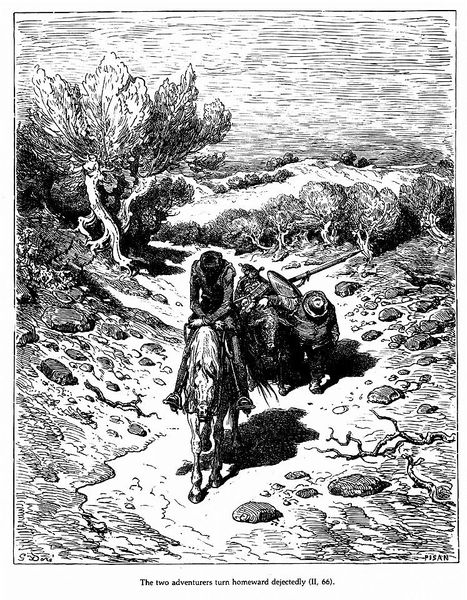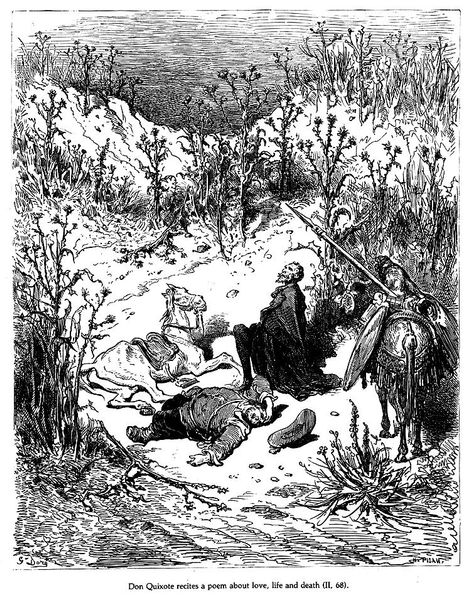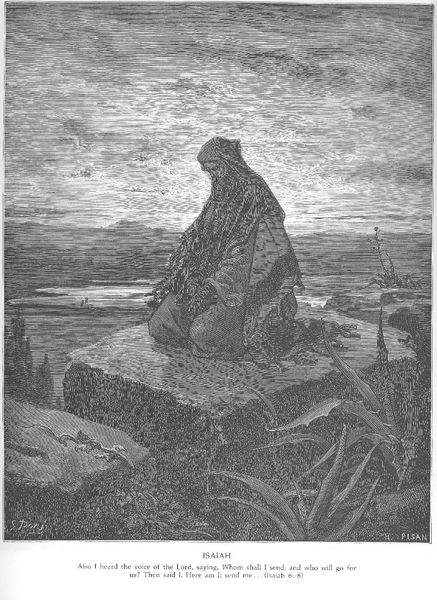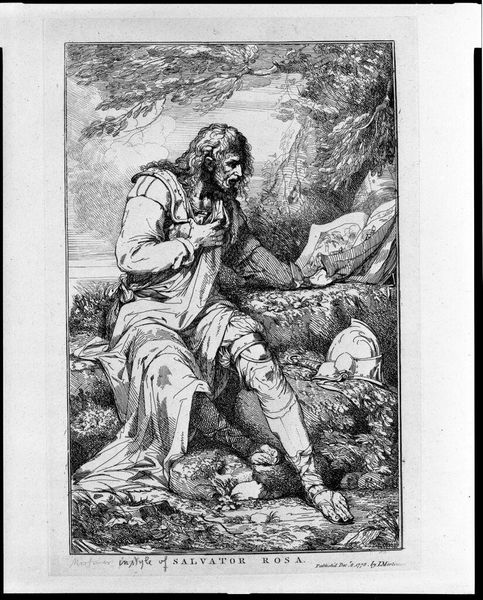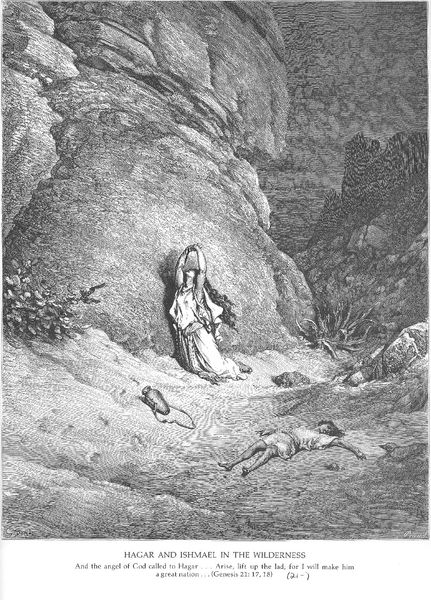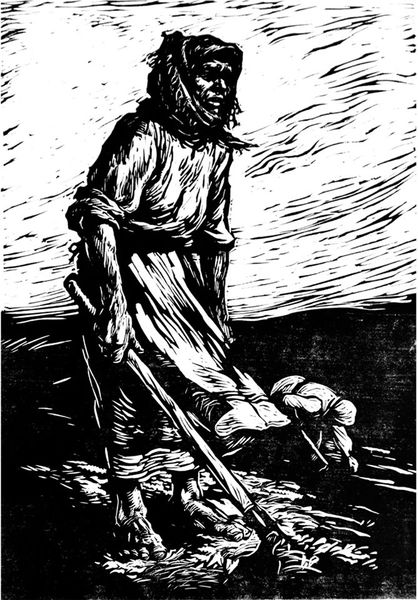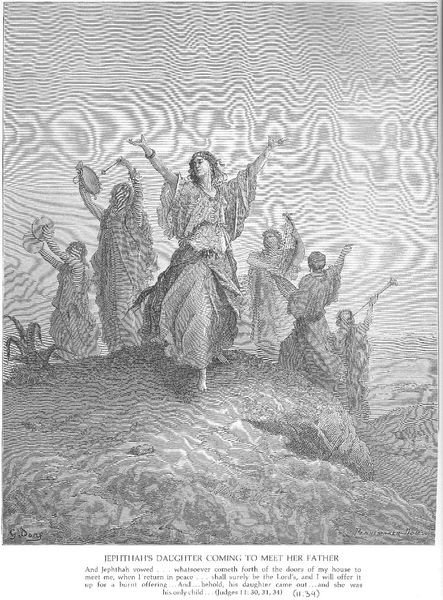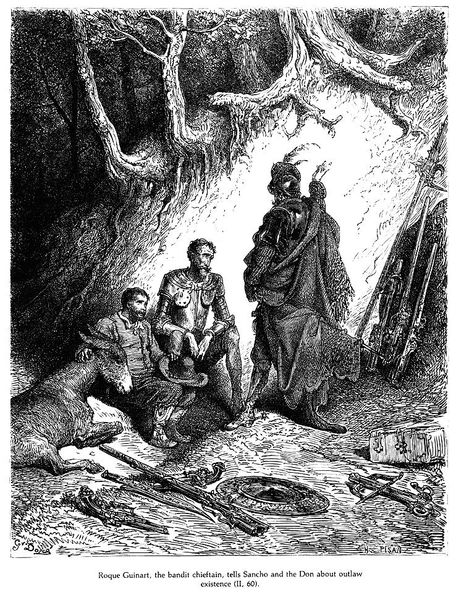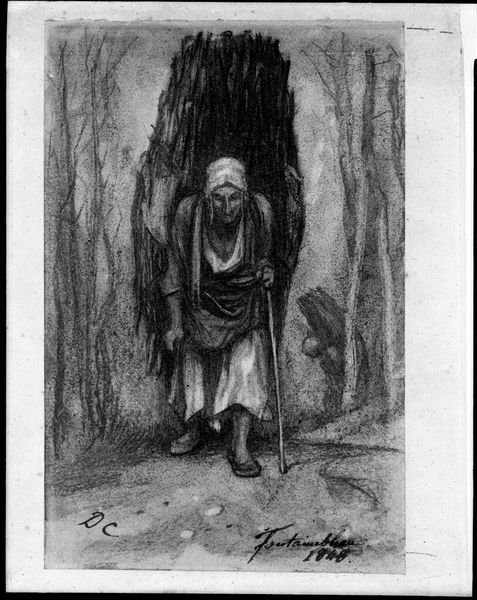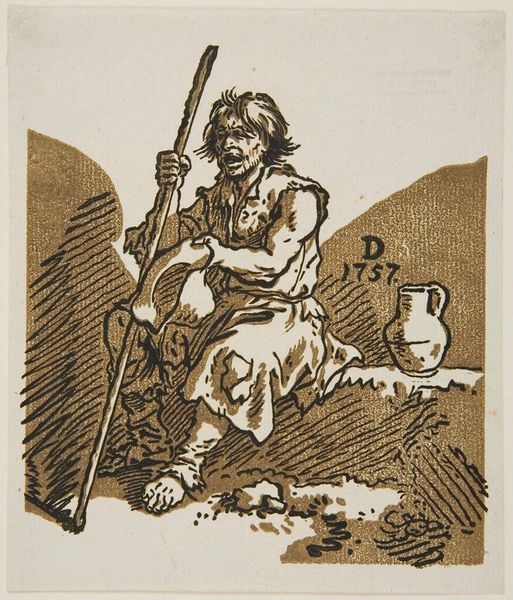
drawing, paper, ink, charcoal
#
drawing
#
narrative-art
#
pencil sketch
#
landscape
#
charcoal drawing
#
figuration
#
paper
#
ink
#
pencil drawing
#
folk-art
#
romanticism
#
charcoal
Copyright: Public domain
Curator: Theodor Kittelsen’s drawing, "Smoerbukk," rendered in ink, charcoal, and pencil, pulls you right into a fairy tale gone sideways. I look at it and I instantly smell wet wool and damp earth... What's your first impression? Editor: Immediately, a kind of visual tension strikes me. The composition directs the eye through a complex network of lines. Observe how the texture—achieved through cross-hatching and varied stroke weights—creates a palpable sense of depth and a somewhat unsettling mood. Curator: Exactly! The texture practically *itches*. It’s a children’s story illustration with adult anxieties lurking just beneath the surface. Look at the stooped figure carrying a small human form. It feels…burdened. There's something wonderfully unsettling about that heavy feeling rendered in what appears to be a work intended for children. Editor: Semiotically, that figure looms large—both physically within the picture plane, but also in terms of visual dominance, and as a bearer of some untold narrative weight. This is reinforced by its central position on the picture plane, contrasted against the background elements of diminished scale. Curator: It screams narrative art, doesn’t it? Kittelsen had a knack for blending Norwegian folklore with the kind of dread you find in the best horror stories. But there's even something funny about it; the exaggerated figure looks comical, almost absurd, a figure from folk art. Editor: I agree, it's clearly infused with folklore. The way the artist uses a limited palette—the stark contrast between the blacks and the highlights of the paper—reinforces this effect, lending it the timelessness of folk art, while also emphasizing its darker themes. The scale amplifies it further, which may serve to distance the viewer or amplify its significance within the overall design. Curator: Kittelsen's landscape—the twisted path, the little hut in the background, that ever-present ominous feeling—becomes a character itself. What could this seemingly Romanticist, seemingly harmless scenery actually hold? That, for me, is the magic of his work. It stirs my imagination. Editor: In the final analysis, “Smoerbukk” achieves a unique position between romanticism and a harsh depiction, leveraging elements to draw the eye around the entire visual field in a meaningful exploration of art theory and storytelling, all working in collaboration. Curator: Perfectly put. And, you know, maybe it is okay to feel unsettled sometimes. Art should do that.
Comments
No comments
Be the first to comment and join the conversation on the ultimate creative platform.
